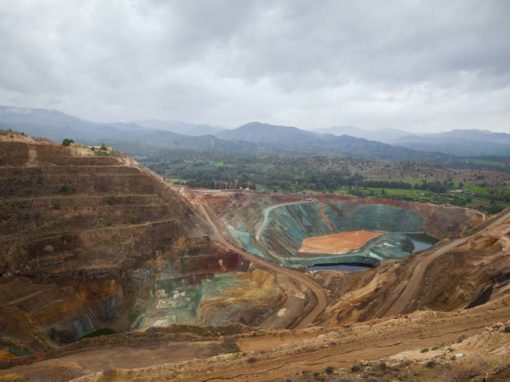Troodos Geopark
In 2015, the Troodos mountain range was selected by UNESCO and proclaimed a Geopark, due to the due to its unique geological heritage, which is derived from the particular genesis and elevation of the mountain range. The Troodos Geopark is located in the central part of Cyprus and its area is about 1147 km2.
The genesis of Cyprus is directly related to the origination and elevation of the Troodos mountain range, also known as the Troodos Ophiolite Complex. It was the result of a series of unique and complex geological processes that made Cyprus a geological model and one of the best developed ophiolithic clusters in the world for geoscientists around the world. They contributed to a better understanding of the evolution of the planet and the oceans. The mountain range was formed 8,000 metres below the sea 90 million years ago, as a result of the Eurasian and African plate collision. This created an underwater volcanic mountain, which slowly emerged on the surface, over a period of 50 million years.
All groups of ophiolithic rocks are found in Troodos. These rocks ranging from the stratigraphically inferior to the stratigraphic superior are:
– Mantle Rock.
– Plutonic rock (dark minerals, such as olivine and pyroxene, to gobbies, in which the light and dark minerals are in approximately equal proportions).
– Venous rock as a result of continuous magma feeding in the created void space.
– Volcanic rock, and in particular flows of the pillow grips, and
– Chemical sediments, (e.g. dirt).
Location
Geology
Amiantos (Asbestos) Mine
In addition to copper, the metal that Cyprus has long been famous for (and named after), another mineral has make its mark in the history of the island. Asbestos. Since antiquity, especially since Roman and Classical times, Cyprus has been known for th
Lake at the Asbestos mine
In a rough and forbidden area in Troodos, near the asbestos mines and after crossing the path from the camp area, one will encounter the lake of Almyrolivados. The route presents difficulties with abrupt changes in landscape morphology and steep climbs
Pillow lavas (Koronia)
These are the igneous rocks that cover the Adelphi forest area, the forest that geologically belongs to the known Troodos ophiolithic system that formed in the Upper Cretaceous about 90 million years ago. These rocks are volcanic rocks of diabase veins
Skouriotissa Mines
The mining history of Cyprus has linked its name (Cyprus) to copper (Cuprous). Copper production in Cyprus began before 3000 BC. and vertically integrated. The exploitation of the copper ore of Skouriotissa is lost in the depths of the centuries, possi
Sulphur Springs
The Sulphur Springs of Kalopanayiotis are located near the banks of the river Setrachos, next to the Venetian bridge. The healing properties of its sulphur-containing waters have been known since antiquity. In fact, at the monastery of Agios Ioannis La














